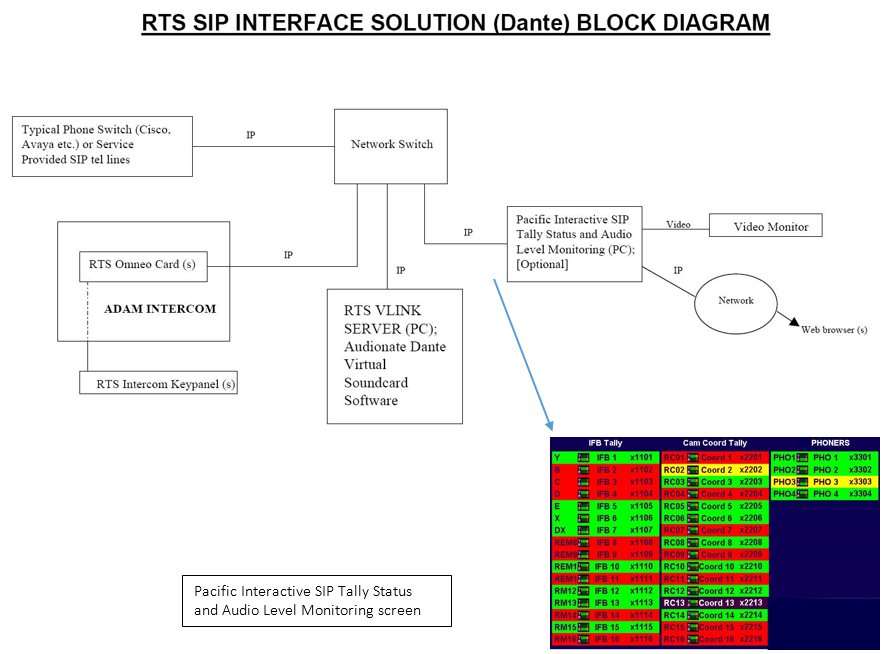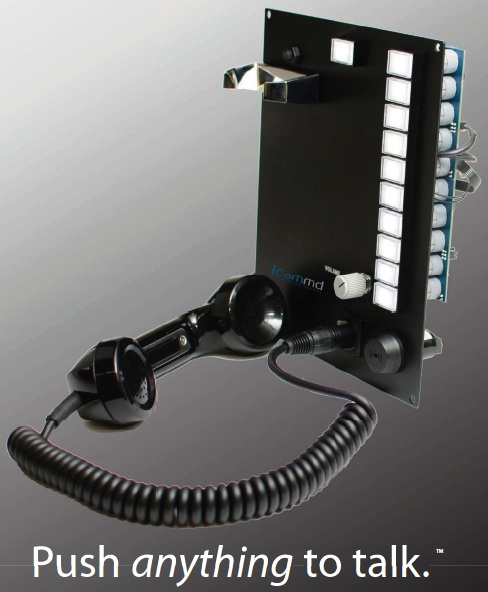SIP Telecom Interface
SIP – Session Initiation Interface
SIP is an acronym for Session Initiation Protocol. It is a digital data transmission standard used in digital telephony systems. Its use has become very widespread in recent years and has triggered significant changes in how professional communications systems integrate with private and public telephone systems.
Since the early days of modern high performance communications systems there is often a requirement for the interconnection of those systems to telephone lines such that a user or users outside the system may become part of a particular conversation. As an example, in the broadcast market it is often necessary for the production staff in a studio to coordinate with someone at a remote location during a news broadcast. In the security market operators may need communications with other facilities or police and fire agencies. The only universal and ubiquitous connection option is a telephone line. For many years the only available connection to the telephone network was by an analog line, the same as a home telephone. Due to the electrical characteristics of such lines connection to non-telephone based systems is difficult and expensive if a good connection is to be realized. There are currently several good and reliable interface devices for use with the major manufacturers’ systems although they remain expensive and limited in terms of control options.
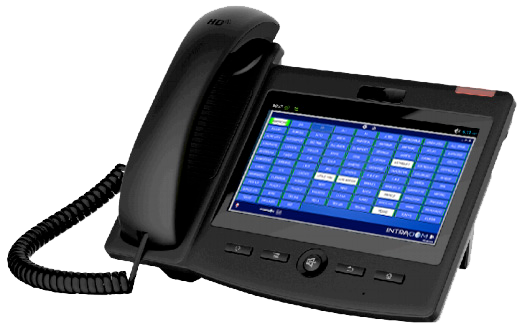
SIP Interface
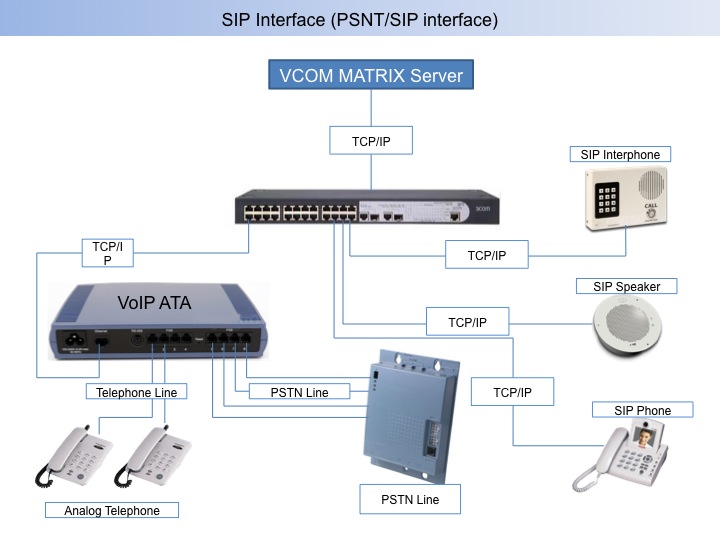
In the recent past there has been a significant increase in the use of VoIP telephone systems and lines. Subscriber (operator/user) connections generally use SIP as the interconnection standard. In such systems each subscriber is a connection to an Ethernet network essentially no different than a typical data network used for computers and is often the same network. There are two significant benefits to this architecture. One is that the connection is digital which eliminates the problems often encountered with analog lines such as audible noise and poor signal quality, and the other is cost savings due to the ability to use shared cabling routing hardware. Installation time is also reduced resulting in additional labor cost savings.
As the installed base of SIP based telephone systems has increased so has the desire to interface using SIP based connections. Since professional intercom systems are not directly compatible with SIP telephone systems or connections, some form of interface must be employed.
The VCOM Virtual Communications platform can directly interface to SIP connections as well as traditional intercom systems and therefore can act as a bridge between SIP systems and devices and traditional hardware intercom systems. When VCOM is intelligently integrated with a compatible hardware intercom, line control, station dialing, caller ID and other SIP intercom phone features can be extended to the hardware system’s operator control stations.
The VCOM Virtual Matrix can interface with SIP systems and devices in a variety of ways:
- Connection of SIP based VoIP telephones. These can be used for ring – down phones or access by office personal. An operator may receive an intercom station originated call or be dialed from a desk type telephone instrument.
- Connection of SIP based security station intercom panels. These include indoor and outdoor/weatherproof models from multiple sources.
- Connection to analog telephones through the use of ATA (Analog Telephone Adapter) devices available from multiple sources.
- Connection of SIP based two way radio interfaces available from multiple sources.
- Connection of intercom system as a SIP client to a SIP based telephone system. This allows a port or multiple ports in the intercom system to become extensions of the telephone system providing telephone system wide access to the intercom system from any appropriately programmed telephone instruments. Calling from the intercom system to a telephone within the telephone system is also possible.
- Integration with other SIP enabled intercom systems. This is expected to become widespread since the EBU has made SIP compatibility a requirement.
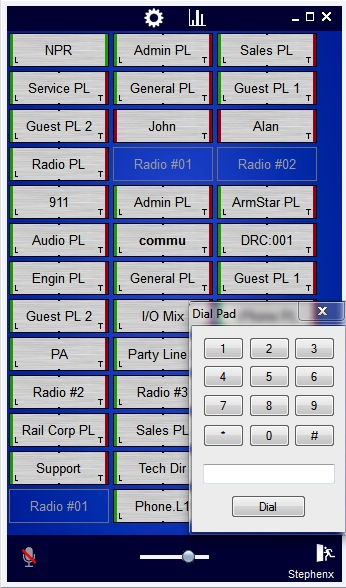
Application Examples:
1. Broadcast Studios and Mobile Units
- Interoperability between SIP intercom phone systems and traditional hardware intercom systems utilizing analog, MADI or Dante connections. One example uses Audinate’s Dante virtual sound card in the VCOM server and provides intelligent interoperability between a SIP phone system and RTS’ ADAM intercom panels with audio connection via RTS’ OMNEO Dante matrix card (see RTS SIP Interface block diagram).
- Direct connection to VoIP based studio office telephone systems. This allows direct dialing to and from the truck without incurring local line charges. For example an assistance director can dial direct into master control or the news director’s office.
- Connect a VoIP telephone or an analog telephone with ATA (Analog Telephone Adapter) and use it as a ring down phone from any operator control panel. Great for a broadcast booth, production office, locker or dressing room. The phone can go anywhere there is a data connection; no additional cable to run.
- Use two telephones (as above) as a two-station telephone ring down circuit. Anywhere there is data available.
- Two way radio base station connection.
2. Commercial and Industrial Intercom Systems
- Connection to entry door and gate intercom stations
- Connection to local VoIP telephone system
- Two way radio base station connection
3. Security Intercom Systems
- Two way radio base station connection.
- Connection to entry door and gate intercom stations.
- Connection to local VoIP telephone system.
- Connection to local law enforcement and fire department.
With VCOM there can be truly seamless integration between two previously separate communications systems that exist together in virtually every environment where complex intercom systems are installed. This is done with no expensive proprietary hardware interface devices. All that is required is VCOM and standard data network components.
Following is a non-comprehensive list of SIP intercom enabled systems tested to work well with VCOM:
- Multi-line analog — AudioCodes MP114 FXO
- Single line Analog Telephone Adapter — Patton M-ATA
- Two Way Radio Interface — ARA-1 Analog Radio Adapter
- Cisco Call Manager

